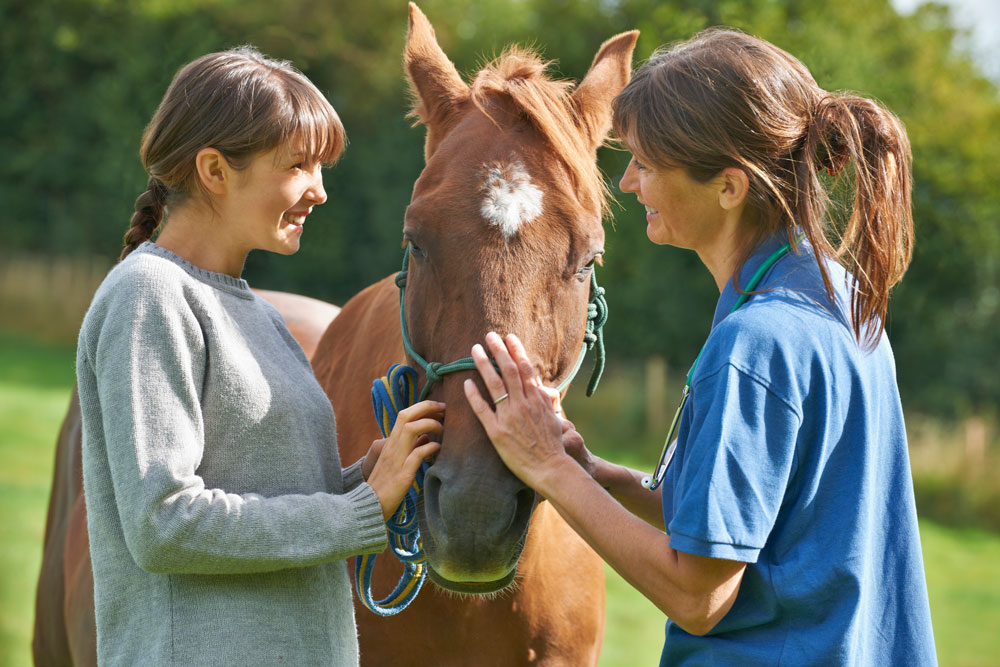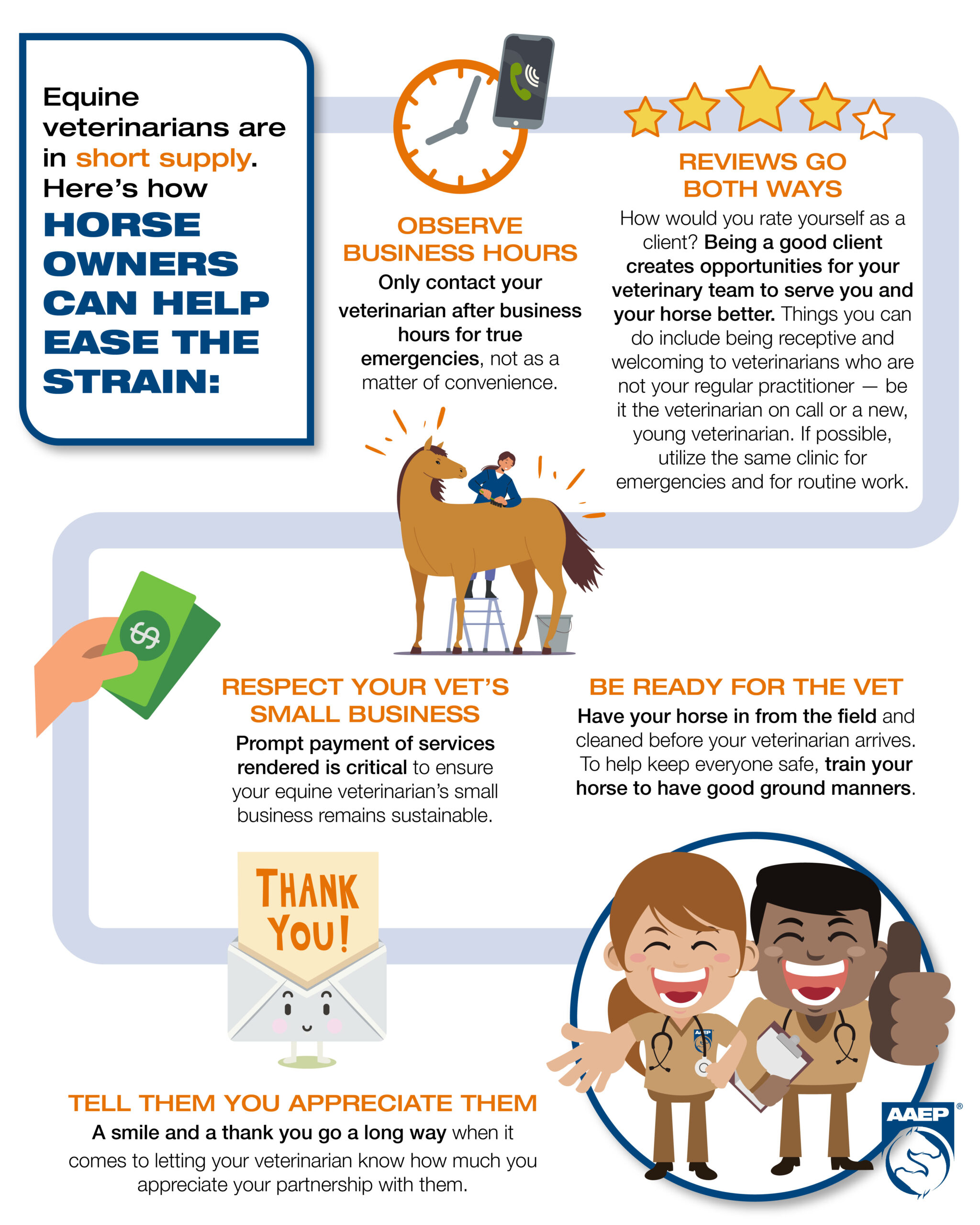
In Episode 40 of The Business of Practice Podcast, we talk to AAEP President Emma Read, DVM, MVSc, DACVS, about the current issues and potential future solutions in equine veterinary practice. Read is Associate Dean for Professional Programs and a Professor at The Ohio State University College of Veterinary Medicine.
Read said the issues facing the equine veterinary industry today have been building for many years, but now they have reached a “crisis point” where practices are having a hard time recruiting and retaining associates and staff.
Last year, the AAEP’s Retention Task Force had interviewed students, new graduates and practice owners about the pain points in today’s veterinary career.
“The findings were eye-opening,” said Read.
The Next Steps
She said AAEP learned about specific “pain points” in veterinary practice to think about and address. That information helped the organization to form the AAEP Commission on Equine Veterinary Sustainability that currently has five subcommittees, each working on a different aspect of the larger issue:
- Compensation
- Emergency Coverage
- Practice Culture
- Internships
- Veterinary Students
More than 80 practitioners have volunteered thus far to be on one of these subcommitties, said Read. “That shows a lot of enthusiasm in trying to fix this,” she stressed.
Read said in compensation, they want to address what is fair to recent graduates and interns, while recognizing they are still “in training” and learning.
“Small animal veterinarians make more money for fewer hours, and I don’t know if we will gain equality, but we know we need to close the gap,” said Read.
Read said the AAEP is also looking at overhauling the Avenues program for interns while looking for more guidance for practices and new graduates.
In practice cultures, she said the very things that draw individuals to equine practice—being fiercely independent and hard workers—sometimes are also those veterinarians’ greatest weaknesses. Those traits can make it hard for busy practitioners to ask for help. Read noted that about 40% of AAEP members are solo practitioners, which can make it hard to balance work and time away from work. Even those solo vets who would like to have help are having a difficult time hiring associates or even techs/assistants in the current job market.
There also are things that equine veterinarians have “always done” that might not fit into today’s or tomorrow’s practice reality.
“Are we doing things because we always done them that way and they are not really efficient, like being on the road to drive an hour to the next appointment?” asked Read.
On the student front, she said from those entering vet school, 35-37% express an interest in equine practice, but only about 1.5% enter equine practice directly upon graduation, with another roughly 3% going into an equine internship. For all those who enter equine practice, about 50% leave within the first five years.
At the 2021 AAEP Convention, a standing-room-only crowd showed up to hear from a panel of former equine veterinarians who had left for other types of practice. “They shared their personal stories, and it was eye-opening,” said Read.
“This year’s [AAEP Convention] focus will be on solutions,” she continued. “What can we put in place to make a change?”
Then at the 2023 AAEP Convention, Read said the organization hopes to have solutions that people have tried in practice and show how they are working. Then we can scale up for other practices,” she said.
Read also said that another future direction will be to engage horse owners on how they can be a part of the solution: “Things like have the horse ready for the vet. Use the vet you call for emergencies and routine work. Welcome young vets to your farm—if your practice is lucky enough to hire someone! Haul horses to the vet when possible, and being prompt with payment for services.”
Click here to download the following AAEP infographic for horse owners.

Veterinary Industry Issues
Many of the issues discussed in this podcast are industry-wide and are not limited to equine practice, stated Read.
She noted that there are issues of veterinary and lay staffing on the practice level in all areas of veterinary medicine. From veterinary schools to multi-veterinarian practices to solo practitioners, there are issues that need to be addressed. And, she said, the “finger-pointing” from one segment to another needs to stop.
Read wrote an article in EVE that talked about many of these issues.
“AAEP can’t fix these problems,” said Read. “Equine practitioners in the field will fix them. The ultimate solutions to these issues will come from all of us figuring out the part we can play. The AAEP can start, but solutions will come in each individual practice.
“That’s where we will change: In our own practice,” she continued. “What can I do to fix this in my own little part of the equine veterinary industry? How can I provide mentorship? How can I help my colleagues and friends?”
Getting Involved
AAEP members can fill out the volunteer interest form on the AAEP website or call the main office to learn more about becoming involved in the push to make a positive future for equine veterinarians.
One way Read said that practitioners can become involved is with the AAEP Speaker’s Bureau. Veterinarians can volunteer to speak to vets and students about equine practice. “We want to set this up across the country,” said Read.
She also mentioned the Decade One peer groups of young practitioners that were first set up by Amy Grice, VMD, MBA, the current AAEP Treasurer. Read said having older practitioners available as mentors to veterinarians in their first years of practice can make a big difference in retaining those young veterinarians.
About Dr. Read
Read’s research interests center around veterinary education—including clinical skills teaching, learning and assessment—workplace-based assessment, as well as curriculum design and implementation. She is the current AAEP President. She has taught in academia and practiced in private practice and now is an administrator, so she has experience in many aspects of the equine veterinary industry.









